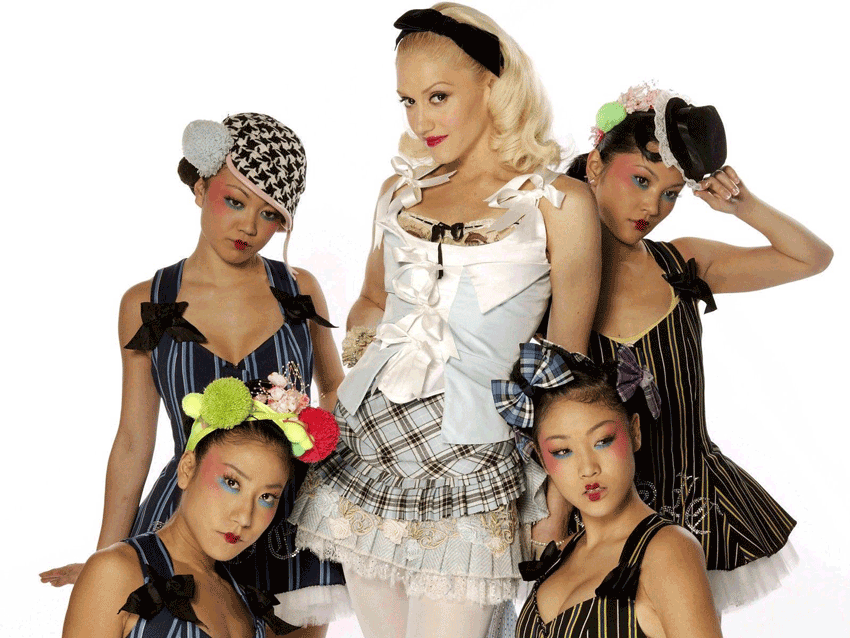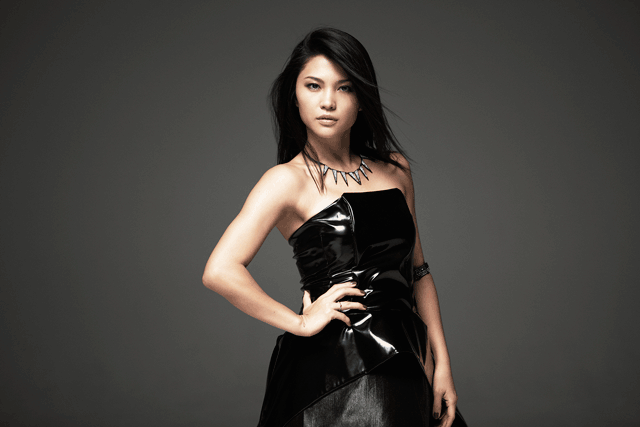Rino Nakasone is living the dream.
By Matthew Hernon
At the age of 19 she went out to America, against her mother’s wishes, in an attempt to become a professional dancer. Since then she has worked with people like Gwen Stefani, Mary J. Blige and Rihanna, appeared in the films “You Got Served” and “Dance Flicks” and finished runner-up in “America’s Best Dance Crew” with her group The Beat Freaks.
She has also choreographed dance routines for some of Japan and Korea’s biggest acts including AKB48, Tohoshinki and Girls’ Generation. It would, therefore, be fair to say that things have gone pretty well for her since moving to the States, but if hadn’t been for a chance encounter in a coffee shop things might have turned out quite differently.
A Lifeline from Janet Jackson
“I had been for an audition with Janet Jackson, but hadn’t heard anything back,” Nakasone tells Weekender. “Quite a long time had passed and my visa was up. I was told by my lawyer that I had no other option but to leave the country. I was now an illegal alien so I started planning to go home – it was heartbreaking. My mind was already back in Japan when I went into a coffee shop and who do I see in there? Janet’s choreographer. This was my chance – I told him my situation and he just said, “don’t go back, you’ve got the job.”
“Of course you try to be as professional as possible, but I must admit there were times when I was star-struck in her presence.”
“I couldn’t believe it, it was like a miracle. If I hadn’t met him that day I would have left the country for sure and once you leave it is very difficult to come back. Soon after our conversation they arranged all the necessary paperwork which meant I could stay in the States and even better than that I would be dancing with Janet Jackson!! This was someone I had idolized since I was a child. I’d grown up watching her and Michael’s videos; imitating all their moves. That was how I learned how to dance.
“Of course you try to be as professional as possible, but I must admit there were times when I was star-struck in her presence. She knew exactly what she wanted down to the smallest detail. At the same time she was also like a mother-figure for all the dancers, taking the time to give us advice. She even invited us all on a trip to Miami; unfortunately I couldn’t go.”
On Tour with Britney
The door had been opened for Nakasone. She now had a huge platform upon which to showcase her undoubted talent and it wasn’t long before other big names began taking notice. In 2004 Britney Spears came knocking, offering the dancer from Okinawa a place on her team for the Onyx Hotel tour. The problem was that Nakasone was due to perform at the Super Bowl alongside Janet Jackson around the same time.
“It was a tough decision,” she says. “At first I wanted to do the Super Bowl, but then I then got a phone call from the choreographer who said he’d discussed it with Janet and they both felt I should go with Britney as it would really help me grow as a dancer. I was deeply touched because it made me realize how much they genuinely cared about my career. That said I was still torn. In the end I followed their advice and went on the world tour, which I don’t regret at all. It was a fantastic learning experience and Britney was really fun to be around. At first I found it difficult to adapt to the style. I’m a tomboy and her shows are girly with high heels and sexy clothes. The pace was also much faster than what I was used to. It meant so much to me when a couple of years later, I was asked to choreograph for both Janet and Britney. It made me feel I’d really progressed in my career.”
A Harajuku Girl
There was no doubt about it: Nakasone was now a dancer very much in demand. The next big star to come calling was Gwen Stefani, who named her as one of the “Harajuku Girls” – four Japanese and Japanese/American backup dancers dressed in pseudo-geisha style attire who followed the singer around everywhere. Speaking on “Friday Night with Jonathon Ross,” Stefani described them as her “imaginary friends.”
“We’d appear on TV shows with her, sit with her in interviews; basically do everything together,” Nakasone says. “We were always silent – like dolls in the background – but it was really interesting to see what a superstar’s life was like: the award shows, promotional stuff, press conferences. It was a fun time.”

Gwen Stefani and the Harajuku Girls (Nakasone, top right) drew their fair share of positive (and negative) attention
The “Harajuku Girls” weren’t everyone’s cup of tea. Stefani was criticized in some quarters for perpetuating racial stereotypes. Comedian Margaret Cho called them a “minstrel show,” while in an article about stereotyping entitled “Gwenihana,” Mihi Ahn claimed that the singer had “swallowed a subversive youth culture in Japan and barfed up another image of submissive giggling Asian women,” (Ironically she began the article talking about an ignorant “big cowboy-hat-wearing Texan,”). Recently Kate Perry, and Avril Lavigne with her “Hello Kitty” music video, have been similarly criticized.
In an interview with Time magazine last December, Stefani defended the concept stating that everything she did with the girls was complimentary because she was a fan. “It’s like I say in the song [“Harajuku Girls”]: it’s a ping-pong match. We do something American, they take it and they flip it and make it so Japanese and so cool. And we take it back and go, ‘Whoa, that’s so cool!’ That’s so beautiful. It’s a beautiful thing in the world, how our cultures come together. I don’t feel like I did anything but share that love. You can look at it from a negative point of view if you want to, but get off my cloud. Because, seriously, that was all meant out of love.” Nakasone agrees.
“I heard about the criticism but it didn’t bother me as I knew Gwen’s intention,” says the dancer. “She just really appreciates Japan—the self-expression, the fashion … That’s what she was trying to convey. It was like an American version of how they saw Harajuku girls—I thought it was genius. A lot of musicians are using Japanese cultural elements in their videos these days; Gwen was like a trailblazer in that sense.”
SHINee Happy People
After the “Harajuku Girls” Nakasone went on to dance for a number of high-profile musicians, including the likes of Justin Bieber. In recent times, however, she has become best known for her accomplishments as a choreographer, particularly with Korean acts. SM Entertainment discovered her on YouTube and asked her to work with SHINee for their debut single “Replay.” Since then she has created routines for artists like Tohoshinki, BoA and Girls’ Generation. She has also choreographed for many Japanese groups such as AKB48 and SMAP – so who better to ask about the differences in the music scenes between the two countries?
“I heard about the criticism but it didn’t bother me as I knew Gwen’s intention,” says the dancer. “She just really appreciates Japan—the self-expression, the fashion … That’s what she was trying to convey. It was like an American version of how they saw Harajuku girls—I thought it was genius.”
“Korean acts are trained globally,” she says. “I don’t think that really happens in Japan. You see some artists like Crystal K and Hikaru Utada going out to the States, but in most cases agencies here seem to focus on the domestic market. In Korea musicians seem more prepared to learn foreign language to help boost their careers while their managers are also prepared to look for European producers or American choreographers to help give their stars an edge internationally. They know who’s hot and in that sense they are really on the ball.”
SM Entertainment clearly knew what they were doing when they hired Nakasone. Her dynamic, gender-neutral arrangements have gone down extremely well with K-Pop audiences. Constantly looking for new challenges, the 35-year-old is now hoping to make an impact on the stage. She is due to perform in the popular musical “Wiz” this month, then “Asterisk” in May. Looking further ahead, she hopes to one day have a speaking role in a Hollywood movie (she didn’t have any lines in “You Got Served” or “Dance Flicks”), and the way her career has gone so far, you certainly wouldn’t put it past her.
You can see Rino Nakasone performing in “Asterisk” on May 18 & 19 at the Tokyo International Forum Hall. For more information, visit the show’s official site.
Images courtesy of Rino Nakasone









